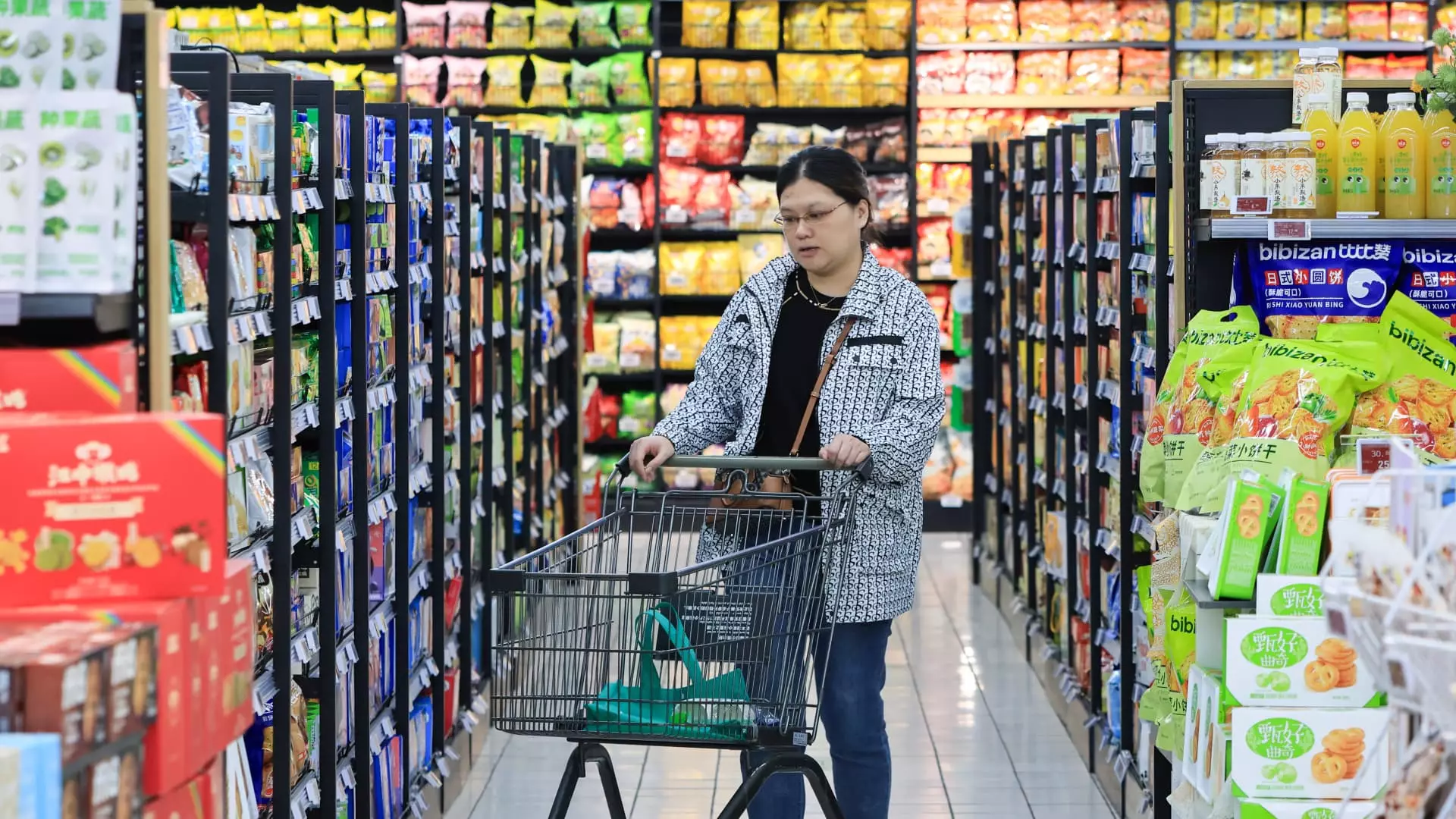The latest economic data from China has painted a complex picture of its consumer and producer price inflation. As the world’s second-largest economy grapples with declining inflation rates, various factors are at play, raising questions about the implications for domestic demand, regulatory measures, and future growth forecasts.
In November, China’s consumer inflation dipped to a five-month low, rising merely 0.2% from the previous year—far below analysts’ expectations of a 0.5% increase. This sentiment was reflected in data provided by the National Bureau of Statistics, indicating an alarming stagnation in consumer spending. Core inflation metrics, which strip away the often volatile prices of food and fuel, saw a slight uptick from 0.2% in October to 0.3% in November, indicating that the economic pressures aren’t entirely confined to food prices.
Meanwhile, specific categories displayed notable fluctuations. Pork prices surged by 13.7%, and fresh vegetables increased by 10.0%, demonstrating variability in consumer costs but without significantly altering the overarching inflation narrative. The persistent lack of robust consumer inflation suggests that households remain cautious, a reflection of broader economic sentiments that continue to undermine domestic demand.
Simultaneously, China’s wholesale inflation, as measured by the producer price index (PPI), has continued its downward trajectory, marking its 26th consecutive month of decline with a 2.5% year-on-year drop in November. Despite falling short of the forecasted 2.8% decline, the ongoing deflation in wholesale prices remains troubling. Factors underlying this situation include significant reductions in metal, fuel, and chemical prices—categories essential for manufacturing—each reporting losses around 5% to 7.1%.
Industry experts, including Erica Tay from Maybank, have pointed out the extensive inventory levels plaguing manufacturers, leading to a supply-demand imbalance. This scenario results in downward pressure on prices and a grim outlook for producers struggling to maintain margins. Thus, the consistent deflation within the PPI underscores a significant sectoral challenge for the economy, which is compounded by sluggish consumer demand as evidenced by low retail inflation rates.
In response to these inflationary trends—or lack thereof—authorities in Beijing have introduced various stimulus measures aimed at rejuvenating economic activity. Since September, initiatives such as interest rate reductions and property market support have been rolled out, yet the desired boost in consumer confidence remains elusive. Analysts like Becky Liu from Standard Chartered Bank suggest that these efforts may fall short, especially in the current geo-economic climate influenced by ongoing tensions with the United States.
Expectations are sobering, with predictions of persistent deflationary pressures in the PPI sector extending potentially through 2025. Goldman Sachs echoed these concerns by projecting continued low figures for the consumer price index (CPI) next year, signaling a turbulent economic climate ahead.
Despite the challenges outlined, there are glimpses of resilience within the Chinese economy. October retail sales exceeded expectations, suggesting that certain segments of the market may be rebounding. Additionally, reports of expanding manufacturing activity for two consecutive months hint at a possible stabilization in industrial output.
The upcoming Central Economic Work Conference will be crucial in shaping future policies and outlining objectives to revitalize growth. However, external factors, chiefly trade policies and their ramifications, will undeniably play a pivotal role in determining the trajectory of the economy in 2025 and beyond. Fitch Ratings has already flagged potential risks, lowering GDP growth forecasts amid expectations of a protectionist shift in U.S. trade policy towards China.
While China’s inflation dynamics present challenges in the form of low retail prices and ongoing producer price deflation, there are signs of resilience and opportunity. Future policy decisions will be critical as the nation navigates these complex economic waters, with the hope of re-igniting consumer trust and achieving sustainable growth amidst geopolitical strains.


Leave a Reply